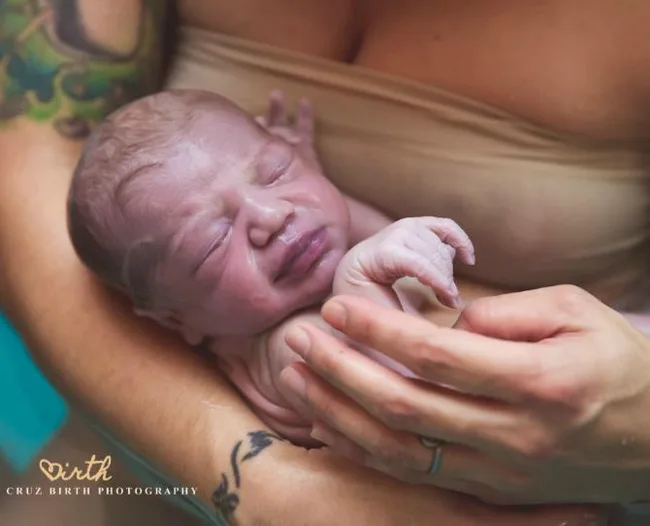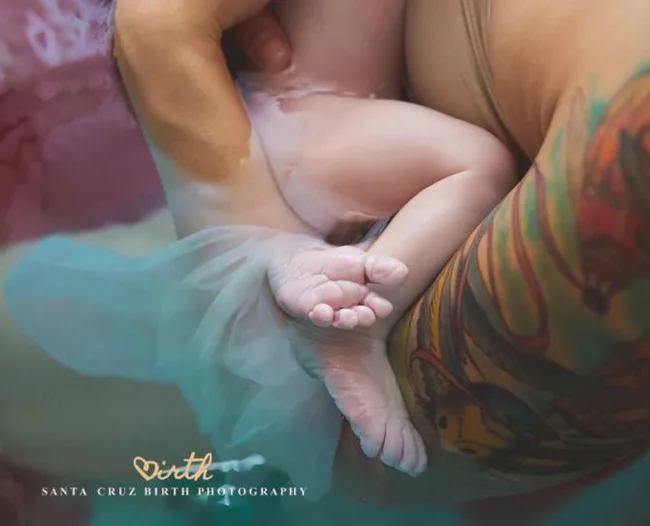Lisa, from Santa Cruz in the U.S was 41 weeks and 5 days pregnant when she went into labour.
She had a water birth in her home helped by her husband, Stephen, their 2-year-old daughter, Finley, and a midwife.
Their baby Juniper was born still inside her amniotic sac – a “caul birth” after eight hours of active labour.
Take a look at these breath taking photos as Santa Cruz Birth Photography captured the magic of baby Juniper’s birth.
All photographs have been re-published with full permission from Santa Cruz Birth Photography.

Lisa from Santa Cruz in the U.S. explained to BabyCenter that she chose to have a water birth due to having a positive Group B Strep test. “I had initially tested Group B Strep Positive, and a water birth lessens the chance that the baby will become infected.”

Lisa’s two-year-old daughter, Finley offers her mother some comfort in between contractions.

Lisa described the benefits of having a water birth, “The warm water was very soothing and the buoyancy of my belly took some pressure off.”

Lisa’s husband Stephen, 42, supported her through her birth, joining her in their inflatable birth pool.

Lisa also had a midwife on hand to assist in her home birth.

Lisa told BabyCenter about the moment she discovered that her baby was born still in her amniotic sac, “As soon as I pushed her head out, my midwife said that she was in the caul.”

“I remember wishing for a caul birth with my first and it almost was but the bag of waters had to be broken so that labor would be easier. As soon as she told us the news, I put my hand down and felt her head.” Lisa told BabyCenter.

Lisa described feeling Juniper as “smooth and soft,” and that when her midwife tore the sac away it “seemed to break very easily.”

“Birth is amazing. Women need to be given the opportunity to believe that they can do what needs to be done.” Lisa told BabyCenter after her empowering birth experience.

It is rare for a baby to be born still in the caul. It occurrs in less than 1 in 80,000 births.

The caul – the amniotic sac – is harmless and is removed by the doctor or midwife once the baby is born.


.jpg?resize=380%2C285)







